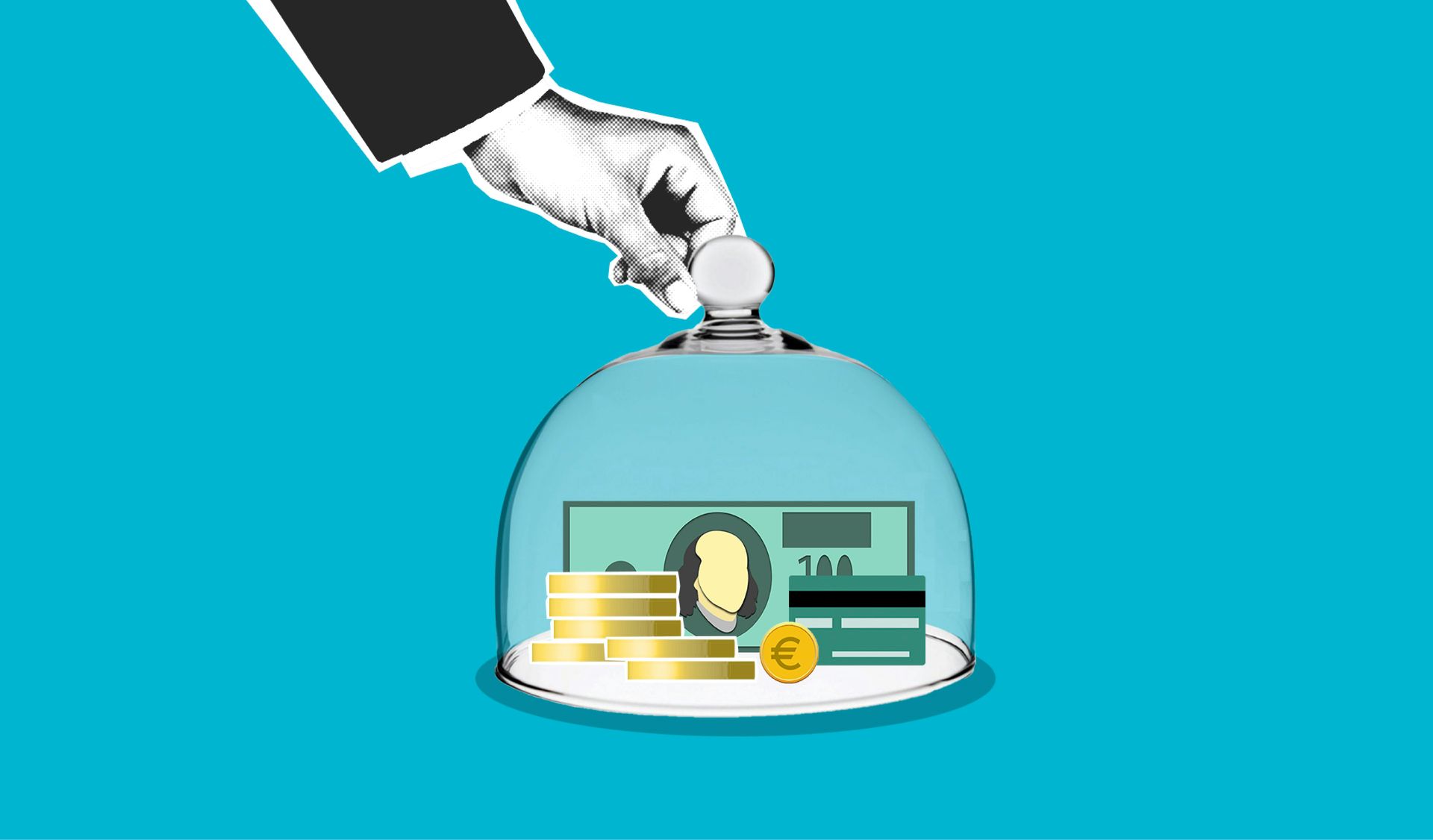
Peer-to-Peer Lending in Canada: Is It Right for You?

When looking for alternative financing in Canada, you might have seen peer to peer lending. It's a new way to lend and borrow money between individuals. P2P lending in Canada is becoming more popular because it offers higher returns and lower interest rates.
P2P lending in Canada is easier than traditional banking. Platforms have fewer rules and more flexible terms. As you look into this option, think about the good and bad sides of P2P lending in Canada.
Key Takeaways
- Peer to peer lending in Canada offers an alternative to traditional banking
- P2P lending Canada provides opportunities for individuals to lend and borrow money
- This approach can offer higher returns and lower interest rates
- P2P lending in Canada has gained popularity in recent years
- It's essential to consider the benefits and risks associated with P2P lending Canada
- P2P lending platforms in Canada often have fewer requirements and more flexible terms
Understanding Peer-to-Peer Lending in Canada
When looking into alternative lending, you might have seen P2P lending platforms. These sites link borrowers with investors, making it easier to get personal loans. In Canada, P2P lending is becoming a popular choice instead of traditional banks.
P2P lending offers benefits like lower interest rates and flexible repayment plans. In Canada, Lending Loop and Grouplend are leading players. They focus on lending to individuals and small businesses.
What Is P2P Lending?
P2P lending lets people borrow from others, not banks. It's done online, where platforms connect borrowers with investors. They handle the loan process.
How P2P Lending Works in the Canadian Market
In Canada, P2P lending is watched over by the Financial Consumer Agency of Canada (FCAC). These sites follow strict rules to protect borrowers and ensure fair lending. When you apply for a loan, your credit is checked, and investors fund your loan.
Key Players in Canadian P2P Lending
Some big names in Canadian P2P lending are:
- Lending Loop: specializes in small business loans
- Grouplend: offers personal loans with competitive interest rates
These platforms have made borrowing money easier for Canadians. They offer a more efficient way to get loans.
The Benefits of P2P Lending for Canadian Borrowers
Investing in P2P lending can be a smart move for those who can't get bank loans. It offers competitive rates and flexible payback plans. This makes it a good choice for many borrowers. You can get money from people, not just banks, which is often easier and quicker.
Some of the key advantages of P2P lending include:
- Easy application process
- Fast approval and funding
- Flexible repayment terms
- Competitive interest rates
By investing in P2P lending, you can enjoy these benefits and better your finances. It's a different way to borrow money, often more convenient and efficient.
P2P lending also helps more people get credit. It's a way to improve your finances. With its good rates and flexible payback, it's definitely worth looking into.
Evaluating the Risks and Challenges
When thinking about P2P lending in Canada, it's key to look at the risks and challenges. P2P lending can come with big risks, and knowing these is important before you decide. One big worry is default risks, which can lead to late payments or losing your investment.
Another important thing to think about is the stability of the platform. A stable platform means your investment is safe and you can get your money when you need it. Look into the platform's history, reputation, and financial health to lower P2P lending risks.
Default Risks
Default risks are a big worry in P2P lending. If a borrower can't pay back, you might lose your investment. To lessen this risk, spread out your investments across many loans.
Platform Stability Concerns
Stability of the platform is also a big concern. A good platform has a strong history, a good reputation, and solid finances. Do your homework on the platform's past, read what others say, and check for any legal issues to keep your investment safe.
Understanding the risks and challenges of P2P lending helps you decide if it's right for you. It's important to think about the good and bad sides and do your research on any platform before you invest.
How P2P Lending Compares to Traditional Banking
When looking at lending options, you might compare traditional banking to peer-to-peer (P2P) lending. It's important to look at interest rates, how easy it is to get a loan, and how flexible the terms are.
Traditional banking often has higher interest rates, making loans more expensive. P2P lending, on the other hand, offers better rates because it connects borrowers directly with investors. This can save borrowers money and give investors better returns.
Interest Rate Differences
Interest rates between traditional banking and P2P lending can vary a lot. P2P lending usually has lower rates, which means smaller monthly payments and less debt overall.
Accessibility and Approval Process
P2P lending is also more accessible and has a simpler approval process. It's different from traditional banking, which can be slow and strict. P2P lending focuses more on the customer's needs.
Term Flexibility
P2P lending also offers flexible repayment terms. This is great for borrowers who need more flexibility in paying back their loans.
In summary, P2P lending is a good alternative to traditional banking. It offers better interest rates, is easier to access, and has more flexible terms. By considering these points, you can choose the best option for your needs.
Getting Started with P2P Lending Platforms
To start investing in P2P lending, pick a trusted P2P lending platform. Look into Canadian options like Lending Loop and Grouplend. Compare their fees, terms, and conditions.
Here are some steps to follow when getting started with P2P lending platforms:
- Research the platform's reputation and reviews from other users
- Understand the platform's fees, interest rates, and repayment terms
- Create an account and verify your identity
- Deposit funds into your account and start investing
When investing in P2P lending, spread your investments to reduce risk. Invest in various loans with different credit grades and repayment terms.
By following these steps and doing your research, you can successfully get started with P2P lending platforms. Start earning returns on your investment.
Making Your Investment Work: Tips for Success
Investing in P2P lending needs a solid base. You must understand the borrower, pick the right loan terms, and manage your investment well. This way, you can lower risks and boost your earnings.
Diversifying is key in P2P lending. By spreading your money across different loans, you cut down on risk. This is done by investing in various loan terms and borrower profiles.
Creating a Strong Borrower Profile
A good borrower profile is vital in P2P lending. Look at their credit history, income, and job to judge their reliability. Picking borrowers with a solid profile helps you avoid defaults and grow your earnings.
Choosing the Right Loan Terms
It's also important to pick the right loan terms. Look at the interest rate, loan length, and repayment plan to match your goals. The right terms can up your earnings and lower default risks.
- Diversifying your investment across multiple loans
- Evaluating the borrower's credit history and income
- Choosing the right loan terms for your investment goals
- Monitoring your investment regularly to ensure it's performing as expected
By following these tips, you can make your P2P lending investment work better. Focus on creating a strong borrower profile, picking the right loan terms, and managing your investment well. This way, you can increase your returns and lower default risks.
Conclusion: Making an Informed Decision About P2P Lending
When thinking about peer to peer lending in Canada, it's key to balance the P2P lending benefits with the P2P lending risks. Knowing how P2P lending operates and researching it can help you make a smart choice. Whether you want to borrow or lend, P2P lending offers a chance to get funds or earn from investments.
In Canada, P2P lending is becoming more popular as an alternative to banks. With its growth and changes, staying updated is important. This way, you can confidently use P2P lending and enjoy its benefits while avoiding risks.
Peer to peer lending in canada can be a great option for borrowing or lending money. Knowing the P2P lending benefits and P2P lending risks helps you choose wisely. Always research and stay informed for a successful P2P lending experience.
FAQ
What is peer-to-peer lending in Canada?
Peer-to-peer lending, or P2P lending, lets people lend and borrow money online. It's a way to invest and get loans without going to a bank.
How does P2P lending work in the Canadian market?
P2P lending connects lenders with borrowers online. Platforms handle the loan process, making it easy for people to borrow and lend. This is a good option for those looking for alternative loans.
What are the benefits of P2P lending for Canadian borrowers?
Borrowers get access to credit, lower interest rates, and flexible payments. P2P lending is a quick and easy way to get money, unlike traditional banks.
What are the risks associated with P2P lending in Canada?
Risks include loan defaults and platform stability. It's important to understand these risks and take steps to protect your investment. Diversify and research the platform well.
How does P2P lending compare to traditional banking?
P2P lending offers better rates, faster approval, and flexible payments. It's also more accessible, making it a great alternative to banks.
How do I get started with P2P lending platforms in Canada?
Start by researching a good platform, then create an account. Understand the fees and terms. You can then invest or borrow, enjoying the benefits of P2P lending.
What are some tips for success in P2P lending?
To succeed, create a strong profile, choose the right loan terms, and manage your loan well. Diversify your investments and know the risks for a successful experience.
Is P2P lending regulated in Canada?
Yes, P2P lending is regulated in Canada. Platforms must follow rules. It's important to know the regulations and how they affect the industry.
Can I invest in P2P lending as a Canadian resident?
Yes, Canadian residents can invest in P2P lending. It's a great way to invest and get loans. But, it's important to understand the risks and follow regulations.


*Disclaimer: Brand Street Agency is authorized to use goPeer's trademarks and branding solely for marketing purposes related to goPeer’s loan products with prior written consent from goPeer. goPeer Corporation and its affiliates are not responsible for any content, statements, or representations made by Brand Street Agency on this website. Loan approvals are not guaranteed and are subject to goPeer's underwriting policies. Terms and conditions apply. For the most accurate and up-to-date information regarding goPeer’s loan products, please visit goPeer's official website (https://gopeer.ca). Brand Street Agency operates as an independent entity and is not an employee, representative, or affiliate of goPeer Corporation or its affiliates. Brand Street Agency may receive compensation for its services.
goPeer offers unsecured personal amortizing loans throughout Canada in amounts from $1,000 to $35,000 with terms of 3 or 5 years and Annual Percentage Rates (APR) between 8.99% and 34.99%, depending on an assessment of the borrower’s credit profile, financial position, and ability to service the loan. If a payment is unsuccessful, goPeer may charge an unsuccessful payment fee of $50. If a payment is late 30 or more days, goPeer may charge a late payment fee of $25 or 5% of the payment due, whichever is greater. goPeer charges an origination fee included in the advertised APR. There are no other fees on loans. Loans are subject to credit and underwriting approval and lending rules may vary by province. For example, the average borrowing cost paid on a $9,400 unsecured personal loan at an APR of 18.8%, with a 5-year term and bi-weekly payments of $104.80 is $4,794.49.













